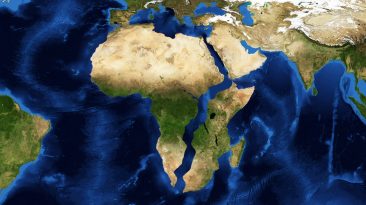55% of the world’s population live in cities. By 2050, that’ll be two thirds of the world’s population.
So what does that mean? Can we accomodate this trend? Should we?
What are the pros and cons of urban density? And how bad can it get?
To date, the greatest population density ever recorded was in Hong Kong’s Kowloon Walled City. Before forced evictions took place in the early 1990s, there were 33,000 people sharing this space, which is about the same area as three American football fields.
And that’s equivalent to 1.2 million people per square kilometer. You can understand why this walled city had to go.
But even if that’s an extreme example, our world is home to some pretty dense cities. Manila is a city with roughly 43,000 people per square kilometer.
While the population of Manhattan is about 26,000 per square kilometer. And while they’re not ideal circumstances for claustrophobics, most people can make it work.
But how about a city that houses the world’s total population. Could that work?
It could… but comfort would vary depending on density. Let’s start with a fun city that has a pretty low population density.
[dx_custom_adunit desktop_id=”RTK_CDE4″ mobile_id=”RTK_SUFd”]In New Orleans, it’s roughly 784 people per square kilometer. If you were to scale New Orleans to accomodate everyone in the world, you’d get a city the size of the continental United States.
But if you were to do the same thing to a high population density city like Manila, which has a population density of 43,000 then everyone in the world would have to fit into a city the size of the country of Uruguay.
It’s hard to speculate on what life would be like if everyone in the world lived in a city this size.
In some ways, it might be more sustainable. We’d save money on huge infrastructure projects like long highways and bridges. Travel and transport costs would go down, since all the materials we’d need would be going to the same place; and that might make basic human necessities like food and medicine more accessible.
Not to mention, having everything from work to home to the supermarket and the shopping mall within walking distance, or accessible by public transit, would reduce our environmental impact. In fact, people in cities use half as much energy as people who don’t because they live in smaller spaces.
But when we think about urban living today, it’s impossible to ignore the cost of rent. With space at such a premium, how much would it cost to live comfortably?
And what kind of quality of life could low-earners expect? In Hong Kong, for example, an incredibly dense city with the most expensive housing market in the world, a 430 square foot apartment costs about 700,000 USD.
In some places, that kind of money could buy you a castle. But with the world crammed into one city, your living quarters might look more like this.
The kind of geo-city we’re envisioning raises a lot of social questions. People tend to move to cities for better opportunities, but, would there be enough to go around?
Would the high concentration of wealth inequality that’s often overlooked in today’s world breed more crime? Or even revolution?
Would there still be wars? Or would proximity help us to understand each other a little better, and realize that we’re not so different after all?
A truly global city is hard to imagine because distance and diverse perspectives have bred different approaches to urban planning. Is there a one-sized fits all approach to cities?
How can we make urban life sustainable and accomodating to all? Luckily, the world will never live in just one city, but these are questions we need to start taking seriously.
Because urban density is on the rise, and like it or not, we’re just gonna have to get more comfortable with each other. Do you know someone who’s claustrophobic?
Subscribe to What-If on Youtube or follow the show on Facebook Watch.
Sources
- “Infographic: If 7 Billion People Lived In One City, How Big Would It Be?”. 2011. Fast Company. Accessed March 4 2019.
- “What Would It Be Like If Everyone On Earth Lived In One Big City? “. Weiner, Sophie, 2016. Popular Mechanics. Accessed March 4 2019.
- “What If Everyone On Earth Lived In One City?”. 2019. curiosity.com. Accessed March 4 2019.
- “If Everyone On Earth Lived As Densely As In Mumbai, Here’s How Much Space We’d Need”. 2018. digg.com. Accessed March 4 2019.
- “Kowloon Walled City”. 2019. en.wikipedia.org. Accessed March 4 2019.
- “Book Review | ‘Green Metropolis: Why Living Smaller, Living Closer, And Driving Less Are The Keys To Sustainability,’ By David Owen”. Royte, Elizabeth. 2017. nytimes.com. Accessed March 4 2019.
- “Average Hong Kong Used Home Prices Soar To Record US$1.28M”. 2018. South China Morning Post. Accessed March 4 2019.



























